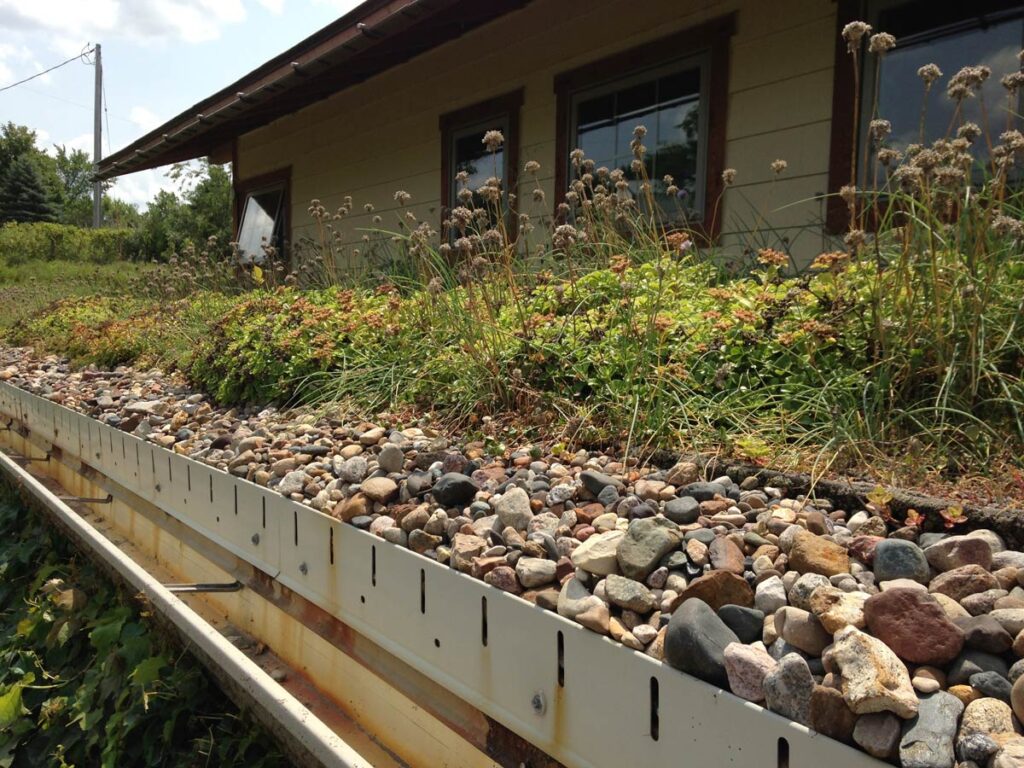Green roofs are systems that incorporate living plants, soil media, and drainage layers on top of conventional building structures. By capturing rainfall where it lands, green roofs help reduce stormwater runoff volumes and improve water quality. They also provide insulation, extend roof lifespan, reduce the urban heat island effect, and offer habitat and aesthetic value in dense urban areas.
These systems typically consist of a waterproof membrane, root barrier, drainage layer, growing media, and vegetation. When it rains, the plants and soil absorb and retain a portion of the water, which is then slowly released through evapotranspiration or drainage. Depending on the design, green roofs can retain 50 to 80% of annual rainfall, significantly reducing the load on municipal stormwater systems. They are especially effective in highly impervious environments where green space is limited.
Key components
Vegetation layer: The top layer of plants that absorbs rainfall, provides cooling, and supports habitat. Drought-tolerant species like sedums are commonly used.
Growing media: A lightweight, engineered soil mix that supports plant growth and retains stormwater without adding excessive weight.
Filter fabric: A geotextile layer that keeps fine particles out of the drainage layer to maintain flow and prevent clogging.
Drainage layer: A porous layer that channels excess water away from the root zone while retaining some moisture and air space.
Root barrier: A layer that prevents roots from penetrating and damaging the waterproofing below.
Waterproof membrane: A sealed base that protects the building from water intrusion and ensures long-term roof integrity.
Insulation (optional): Rigid insulation may be included to improve energy efficiency, depending on roof design.
Roof structure: The building’s structural system must support the full weight of the green roof, including wet media and vegetation.
About Living Walls
Living walls, or green walls, are interior or exterior walls that are either completely or partially covered with plants, soil, or substrate. In addition to aesthetics, living walls can provide insulation to regulate air temperatures and purify air quality.



